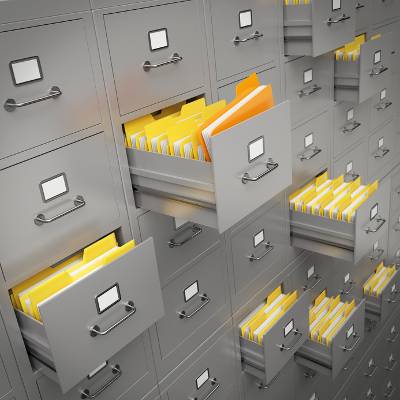Businesses create and need to handle more data than ever before. In the past, this would mean that there would be a lot of wasted data. Today’s document management system can completely revolutionize your business. Let’s take a look at the steps that go into creating a comprehensive digital document management system.
Directive Blogs
Most modern organizations will have digitized their businesses to at least some degree without really putting much effort or thought into it. This massive and often unconscious change has created a lot of benefits for businesses with perhaps one of the most overlooked benefits being document digitization. Today, we want to discuss the great benefits that come from this initiative and why you should consider it.
When looking to cut your costs, one of the best places to start looking is at your printing. While paper documents were once incredibly important for businesses (they still serve a function), no one can deny that they take up a considerable amount of space in the workplace, as well as take up precious assets that could be better spent elsewhere. What’s the best way to minimize the resources you spend on printing?
Every person has documents that they need access to, so it stands to reason that a business has hundreds. If you and your staff are tired of sifting through dingy file cabinets to find that the document that should be in a certain place, isn’t, considering a document management system may be right for you. Today we will give you five good reasons why moving to document management can be a benefit for your business.
For decades, companies have been looking for an efficient way to manage their documents. For the longest time, the best way was to fill one side of an office with filing cabinets and file the documents away. With most of the workplace now being run by computers, and with hard costs at an all-time low, companies have begun to file all their new files on computer network.
Consider for a moment how many documents are floating around your business at any given point. Memos, notes, invoices, receipts, and whatever else you happen to accumulate in the course of business, all floating around the office. This isn’t a great approach, and unfortunately, the classic solution for this, the filing cabinet, isn’t the most effective solution anymore.
There’s no denying that digital records have quite a few advantages over paper documentation. Benefits of ‘going paperless’ include simplified search capabilities, more efficient storage, heightened security and automated backup capabilities. There are plenty of sources around the Internet that discuss making the switch to paperless documentation, but to keep your business documents safe, it is better to know what you’re getting into.
The file cabinet. It may be a staple of the office, but boy can they be a pain in the neck. Every file needs to be printed and collated only to be filed in a dingy file cabinet with the off chance that it will ever be needed again. For businesses that have a lot of paper filed away, a document management system can go a long way toward modernizing your organization, and providing a access-controlled database where you can find any file in seconds.
How many documents does your organization accumulate just by simply staying in business? There’s no doubt that you’re sick of the traditional filing cabinet, which is both hard to move around and a pain to organize. Thankfully, modern technology solutions have afforded businesses just like yours with the ability to host and manage documents in a digital, cloud-based environment.
 Trivia time! Do you know what device was invented in 1892 that changed the face of offices around the world? If you guessed the fax machine then you're close, but you need to think further ahead by almost 50 years (the first fax machine was patented in 1843 by Alexander Bain). More influential than even the fax machine is the file cabinet, established in 1892.
Trivia time! Do you know what device was invented in 1892 that changed the face of offices around the world? If you guessed the fax machine then you're close, but you need to think further ahead by almost 50 years (the first fax machine was patented in 1843 by Alexander Bain). More influential than even the fax machine is the file cabinet, established in 1892.


